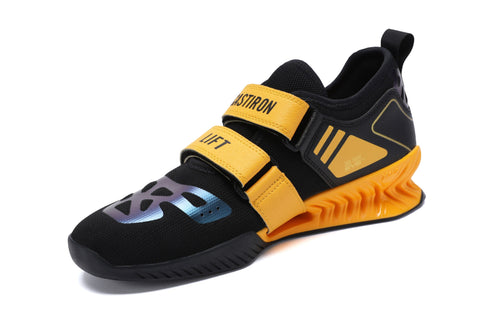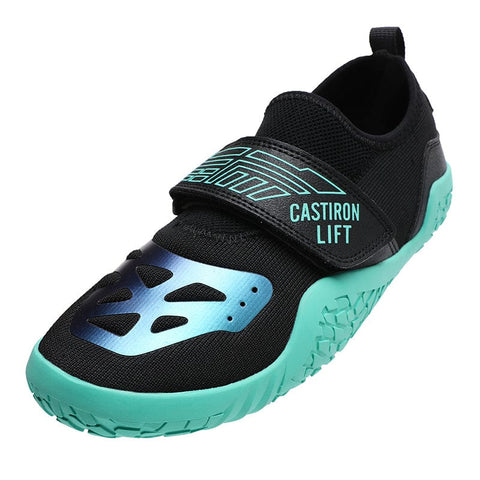Ultimate Guide: Elevate Your Lifting with the Right Heel Height
Weightlifting is a demanding sport that requires precision, strength, and stability. One crucial factor that can greatly impact your performance is the type of shoes you wear. Weightlifting shoes are specifically designed to provide the necessary support, stability, and grip needed for lifting heavy weights. One key feature of weightlifting shoes is the heel height, which plays a significant role in enhancing your performance and preventing injuries. In this ultimate guide, we will explore the importance of choosing the right heel height for your weightlifting shoes and provide you with practical tips on how to find the perfect fit.
Importance of Choosing the Right Heel Height
The heel height of weightlifting shoes is not a matter of fashion or personal preference; it has a direct impact on your lifting technique and overall performance. The main purpose of the elevated heel is to improve your squatting position and maximize your power output. A proper heel height allows you to maintain an upright posture and achieve the desired depth during squats, cleans, and snatches. It also helps to shift your center of gravity forward, allowing you to engage your quadriceps and glutes more effectively. Therefore, choosing the right heel height is essential for optimizing your lifting mechanics and preventing injuries.
Factors to Consider When Selecting a Heel Height
Several factors should be taken into account when determining the ideal heel height for your weightlifting shoes. First and foremost, consider your mobility and flexibility. If you have limited ankle mobility or tight calf muscles, a higher heel may be beneficial as it compensates for these limitations and allows for a greater range of motion. On the other hand, if you have excellent ankle mobility, a lower heel may be more suitable as it provides a more stable base.
Another crucial factor to consider is your lifting style. Different lifting techniques require varying degrees of ankle mobility and stability. For example, Olympic weightlifters who perform snatches and cleans often prefer a higher heel to achieve a deeper squat position and maintain an upright torso. Powerlifters, on the other hand, who focus more on deadlifts and squats, may opt for a lower heel or even flat shoes to maximize their stability and strength.
How to Measure Your Ideal Heel Height
To determine your ideal heel height, it is recommended to consult with a professional shoe fitter or a qualified coach who specializes in weightlifting. They will assess your mobility, flexibility, and lifting technique to provide you with personalized recommendations. However, if you cannot access professional help, you can perform a simple test at home. Stand barefoot with your feet shoulder-width apart, then elevate your heels on a sturdy object such as a weight plate or a book. Gradually increase the height until you feel comfortable and stable in a squatting position. Measure the height of the object, and this will give you a rough estimation of the heel height that suits you best.
Common Heel Height Options for Weightlifting Shoes
Weightlifting shoes come in various heel height options, typically ranging from 0.6 inches (15mm) to 1.2 inches (30mm). The most common heel height for weightlifting shoes is around 0.75 inches (19mm), which provides a good balance between stability and ankle mobility. However, different brands and models may offer slight variations in heel height, so it is essential to try on different options to find the perfect fit for you. It is worth noting that while a higher heel may provide certain advantages in terms of mobility and depth, it may also increase the risk of ankle instability and make the shoe feel less stable during heavy lifts.
Pros and Cons of Different Heel Heights
Each heel height option for weightlifting shoes has its pros and cons, and the choice ultimately depends on your individual needs and preferences. Let's explore the advantages and disadvantages of different heel heights to help you make an informed decision:
0.6 inches (15mm) - Low Heel
Pros:
- Provides excellent stability and balance during heavy lifts
- Suitable for powerlifters and individuals with exceptional ankle mobility
- Offers a more grounded feel and a lower center of gravity
Cons:
- May limit ankle mobility for individuals with poor flexibility
- Not ideal for Olympic weightlifting techniques that require deep squats
0.75 inches (19mm) - Medium Heel
Pros:
- Offers a good balance between stability and ankle mobility
- Suitable for a wide range of lifting styles and body types
- Provides adequate depth for most weightlifting movements
Cons:
- May not be optimal for individuals with extremely limited ankle mobility
- Some lifters may prefer a slightly higher or lower heel based on their specific needs
1.0 inches (25mm) - High Heel
Pros:
- Maximizes ankle mobility and allows for deep squat positions
- Ideal for Olympic weightlifting techniques such as snatches and cleans
- Can help compensate for limited ankle mobility or tight calf muscles
Cons:
- May feel less stable during heavy lifts for some lifters
- Not recommended for individuals with excellent ankle mobility
It is important to note that these pros and cons are general guidelines, and individual preferences may vary. It is crucial to try on different heel heights and assess how they feel and perform for your specific lifting style and body type.
Finding the Right Heel Height for Your Body Type and Lifting Style
While the general guidelines mentioned above can provide a starting point, finding the right heel height for your body type and lifting style may require some experimentation. Factors such as your height, weight, limb proportions, and individual biomechanics can influence the optimal heel height for you. For example, taller individuals with longer limbs may benefit from a slightly higher heel to achieve a more balanced squat position. Similarly, individuals with shorter limbs may find a lower heel more suitable to maintain stability and proper lifting mechanics. It is crucial to listen to your body and pay attention to how different heel heights affect your performance and comfort during lifting sessions.

Tips for Trying On and Testing Weightlifting Shoes
When trying on weightlifting shoes, there are a few key points to consider to ensure a proper fit and optimal performance:
-
Size and Width: Weightlifting shoes are typically designed with a snug fit to maximize stability. Ensure that the shoes provide enough room for your toes to move comfortably while keeping your foot securely locked in place.
-
Heel Cup and Ankle Support: Check the heel cup and ankle support of the shoes. They should provide a firm hold without causing discomfort or restricting your ankle mobility.
-
Flexibility: Test the flexibility of the shoe's sole. It should be rigid enough to provide stability during lifts but still allow for some degree of flexibility during other movements.
-
Grip: Pay attention to the grip of the shoe's outsole. It should provide sufficient traction on the lifting platform to prevent slipping.
-
Test Lifts: Perform a few test lifts while wearing the shoes to assess their overall feel and performance. Pay attention to your stability, comfort, and ability to achieve proper lifting mechanics.
Recommendations for Different Weightlifting Shoe Brands and Heel Heights
There are numerous weightlifting shoe brands available in the market, each offering different heel heights and designs. Here are some popular brands and their recommended heel heights:
-
Castiron Lift IronLifter Gen2: Known for their quality and durability, Nike Romaleos offer a 0.75-inch (19mm) heel height, which is suitable for most lifters.
-
Adidas Adipower: Adidas Adipower weightlifting shoes have a slightly higher heel of 0.79 inches (20mm), providing added ankle mobility and depth.
-
Reebok Legacy Lifter: Reebok Legacy Lifters are favored by many weightlifters and offer a 0.75-inch (19mm) heel height for a balanced lifting experience.
-
Do-Win Weightlifting Shoes: Do-Win weightlifting shoes provide a lower heel height of 0.6 inches (15mm), making them ideal for powerlifters and individuals with excellent ankle mobility.
Remember, these are just a few recommendations, and it is essential to try on different brands and models to find the perfect fit and heel height for your weightlifting needs.
Conclusion: The Importance of Finding the Perfect Heel Height for Your Weightlifting Shoes
Choosing the right heel height for your weightlifting shoes is a critical decision that can significantly impact your performance and safety. The ideal heel height depends on factors such as your mobility, lifting style, and individual biomechanics. By considering these factors, trying on different options, and seeking professional guidance if needed, you can find the perfect fit that optimizes your lifting mechanics and helps you reach your full potential. Remember, weightlifting shoes are an investment in your training, so take the time to find the perfect heel height that supports your goals and lifts you to new heights. Happy lifting!
Now that you have a comprehensive understanding of how to choose the perfect heel height for your weightlifting shoes, it's time to take action. Visit your local sports store or check out reputable online retailers to explore the wide range of weightlifting shoe options available. Don't settle for subpar footwear that hinders your performance and safety. Invest in the right pair of weightlifting shoes and elevate your lifting game to new levels. Your body will thank you, and your gains will speak for themselves!




























